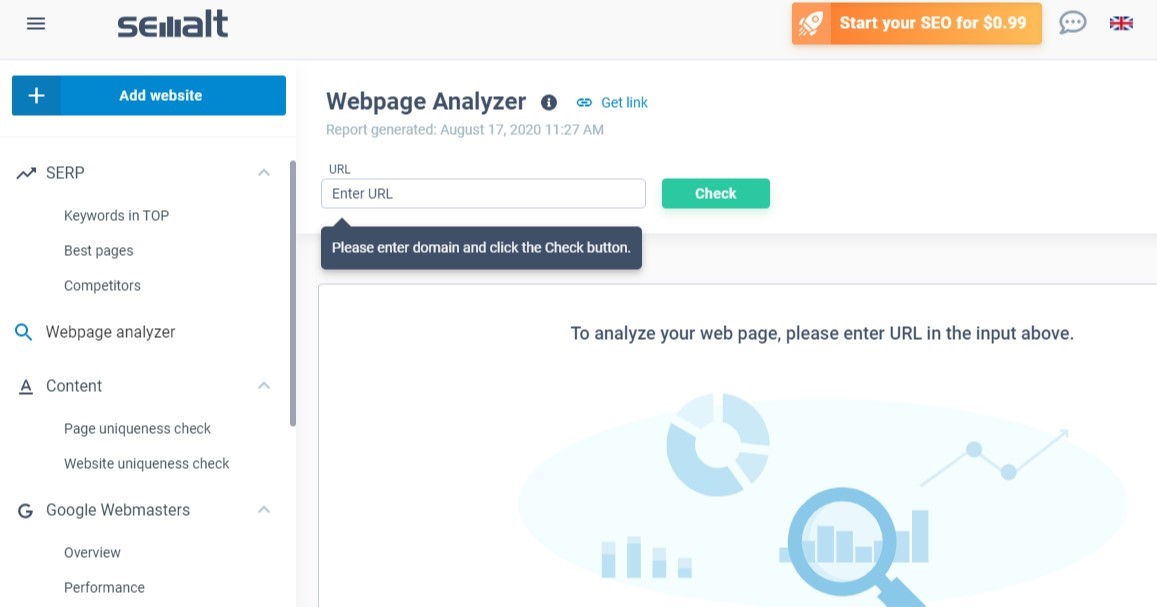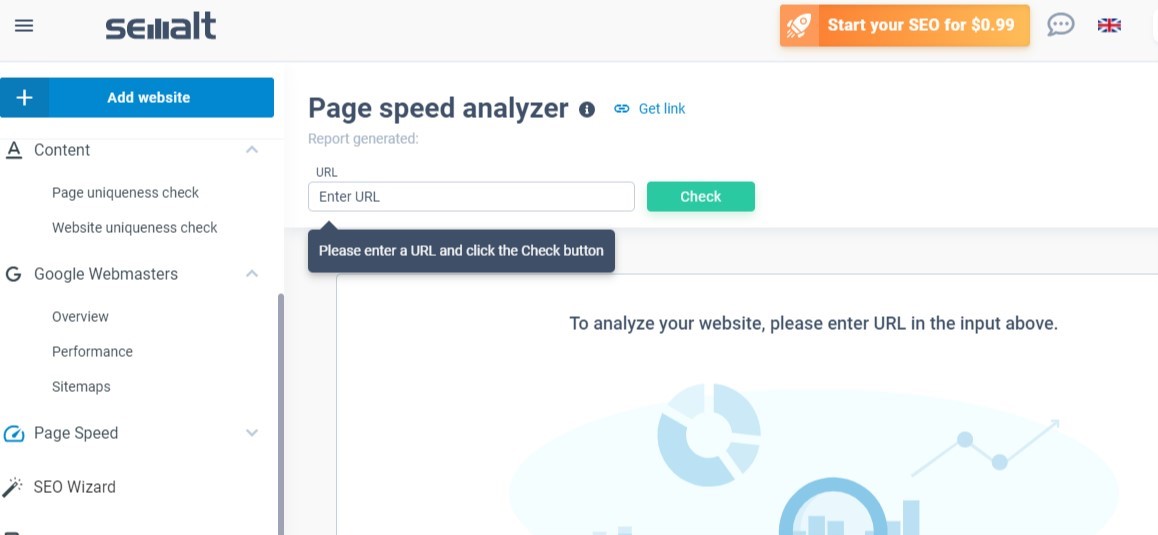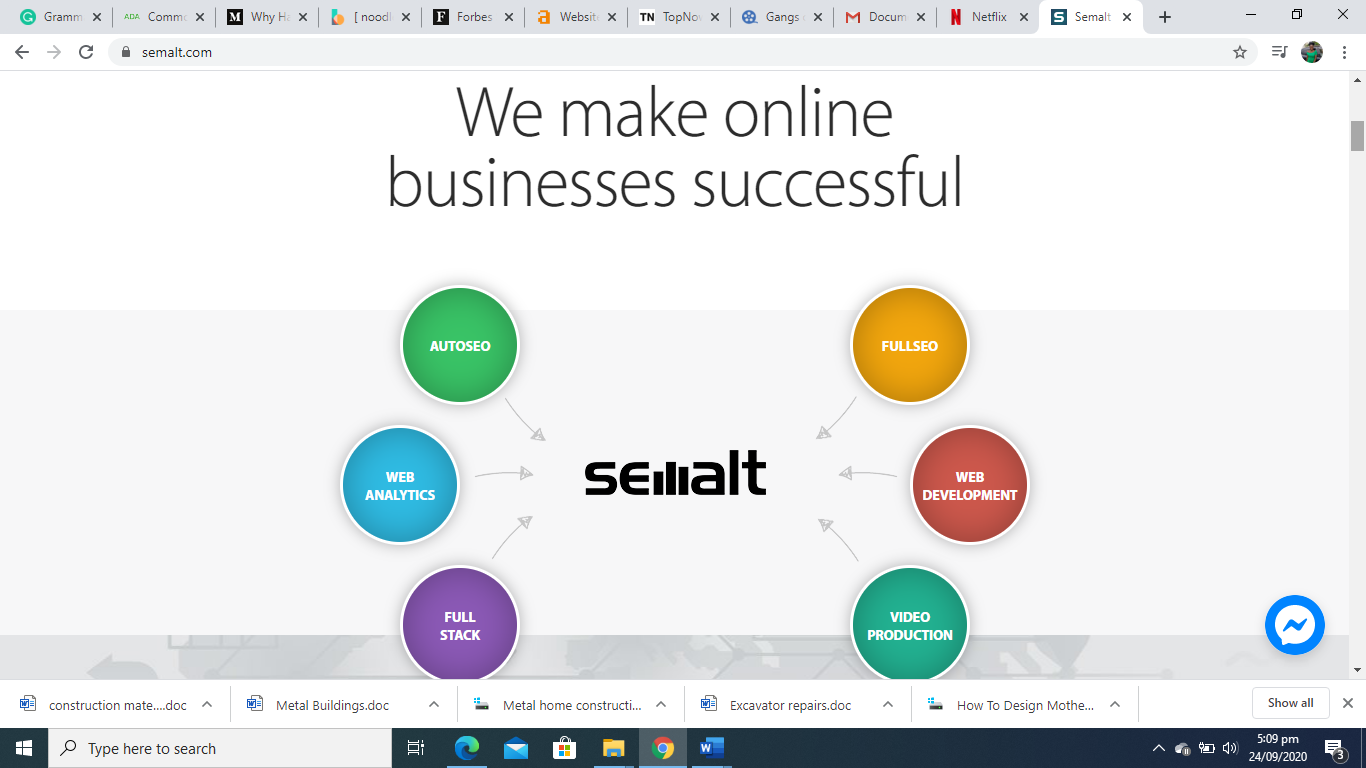Causes And Semalt Solutions To Slow Websites

Table of Content
1. Introduction
2. Causes and Solutions To Slow Websites
- Too many HTTP Requests
- Large Media Files
- Too Many Plugins
- JavaScript Issues
- You Are Not Using Caching Techniques
- You Are Not Using A CDN
- Un- optimized CSS
- Cluttered Homepage
- Unclean Coding
3. Conclusion
1. Introduction
You can't be truly successful as a website owner if you have pages that take forever to load. Gone are the days when users had to endure the frustrating experience of a slow website. Recent studies have revealed that most users abandon a site if it takes more than three seconds to load. The meaning is simple; in this 21st century, speed is the name of the game.
Page speed affects how search engines rank your site. It also affects your site's visibility and credibility. Having a slow website can result in a decrease in revenue, as 40% of users will abandon your site if it takes more than 2-3 seconds to load. You'll also be giving the site visitors a negative experience, making them less likely to return to your site.
There are many factors responsible for slow websites. Read on to find out what these factors are and how to fix them.
2. Causes and Solutions to Slow Websites
- Too Many HTTP Requests
This is a common reason for slow websites. When you have so many JavaScript images and CSS, it can slow your website's loading time because the browser requests to load each of these files every time someone visits your site. 80% of your website's loading time is connected to downloading these elements.
To solve this problem, minimize your HTTP requests. If you use the Chrome browser, use your developer tool settings to find out the number of requests your website currently makes for every search, and then reduce that number as much as possible.
You can also try combining some of them. You can minify and combine files in your HTML, CSS, and JavaScript as these files add to the number of requests your site makes on every visit. Also, you can remove unnecessary redirects as they contribute to slow loading time or use Semalt's webpage analyzer to run diagnostics and proffer solutions.

- Large Media Files
This is one of the most common culprits of a slow website. Having too many unoptimized images or videos reduces your website's load speed because the images will use a lot of bandwidth while loading. If you often upload large files before attempting to compress them, you are unnecessarily increasing your website's size, which will affect your website's speed.
To solve this problem, optimize your media files by compressing them before uploading them to your website. Your images shouldn't be larger than 100k. There are various online tools that you can use to optimize your images. You can use a free image compression tool called TinyJPG to reduce your image size before uploading them. If you run a WordPress site, you can use WP Smush.
You should also pay attention to the image format as PNG or GIF image formats are much larger compared to JPG format, thus using JPG image format can help your site load a lot faster. You can use graphical editing applications like Photoshop to select the image format you want. Photoshop has an option called "Save for Web and Devices," which allows you to reduce the quality of an image before uploading it to a site.
- Too Many Plugins
Too many plugins might be another reason your website is slow. If you have various plugins controlling your site's different features, it can weigh your site down and cause it to load more slowly. This is because plugins increase the work your site has to do while loading. Plugins can also interfere with catching pages in your site, reducing your site's page speed.
Don't get carried away with the thousands of plugins that offer amazing things for your site and overload your site with too many plugins. Instead, have an all in one plugin that can do the work efficiently. One plugin that you can use for this purpose is MalCare. It allows you to manage your WordPress site and also protects your site from hackers and malware.
- JavaScript Issues
JavaScript is an important tool that makes your site functional and more interactive for users. It makes it easier to load dynamic data via AJAX and also add special effects to your page. However, if it is not well handled, JavaScript can be a problem for your website.
It can prevent your pages from loading as quickly as it should because the browser has to fully load every JavaScript file before it can display a webpage. An unoptimized JavaScript can result in what's known as render-blocking JavaScript, or JavaScript that delays your pages when users try to open them in their browsers.
To tackle this problem, you should:
- Use the inline JavaScript instead of using external JavaScript files.
- Audit your JavaScript files to see if there's anyone that's not so important so you can get rid of them.
- Compressing your JavaScript will also help, install a YUI compressor and use it to crunch your files.
- Use asynchronous loading for your JavaScript files.
- Defer JavaScript loading; if you prevent JavaScript from loading until after other elements have loaded, you will increase your page speed.

- You are Not Using Caching Techniques
When you enable a browser caching, your browser can store static copies of your website's files in a hard drive or a cache. That way, it can display the cached data instead of sending another HTTP request to the server every time a user visits your site.
You can easily enable caching using plugins like W3 Total Cache. This will work best for you if you use a WordPress site. W3 Total Cache says that its users' page speed became ten times better than before using the plugin.
To store a cached version of your site in a user's browser and go to the general settings. Select browser cache, click on the box "Enable" Note that you can determine the length of time you want a file stored in a visitor's cache. All you have to do is add a line that tells the browser how long you want a file to stay in a visitor's cache.
- You are Not Using a CDN
A Content Delivery Network allows you to store copies of your website on different servers positioned in several strategic locations so that your pages can load quickly when users far away from your main server try to access your site. Hosting your site on only one server can cause a slow page speed because all visitors to your site sends requests to that same server, and this can create a high level of traffic for your site, increasing the time spent to process users' requests and leading to slow loading time.
To fix this problem, it's best to use a CDN. With a CDN, you can easily cache your data on different servers and avoid your main server getting jammed up with too many requests. This means that when a user requests a file from your site, their browser can download it from a server closest to them. Cloudflare and MaxCDN are good CDN options that you can use.
- Un- optimized CSS
Cascading style sheet (CSS) has a lot to do with the appearance of your site. It gives the browser instructions on your site's font size, color, menu, header, footer, and other details on your web pages' appearance. CSS files can be very long, with so many lines of codes. This can significantly reduce your page load speed.
You can optimize the CSS by combining all your images into one large file using image Sprites. Another tip is to compress your CSS file into a new one with reduced white spaces. You can do this with the use of CSS minifiers like CSS Nano. Audit your CSS files and codes and get rid of any unnecessary files or duplicates.
- Cluttered Homepage
If your website loads very slowly, it's probably because you've overlooked the amount of clutter built on your homepage and perhaps throughout the entire pages of your website.
Many web developers cram their home page with various stunning images, widgets, and contents, all in an attempt to make an impressive first impression to visitors to their site. Although it's a good thing to have an attractive front page, going overboard and cluttering it with different contents can negatively affect your site's loading time.
The more elements you have on your home page, the more time it will take to load. It's always better to keep it simple. Stick to the basics and eliminate all unnecessary elements from your home page, also scan all the pages on your site and de-clutter them to enable your site load faster.

- Unclean coding
If your website is filled with excess white spaces, inline stylings empty new lines, and unnecessary comments, then yes, you will experience a slow website. Every website is created with a lot of codes. Google, for instance, is built on 2 billion lines of codes. Some web developers produce websites that have excessive lines of codes that do not perform any major functions. These dense, extensive codes can slow down your website's loading speed.
The solution to this problem is to eliminate all unnecessary elements from your codes, such as extra spaces, empty new lines, and unnecessary comments. There are many tools you can use to clean your codes. A Mark-up is an amazing tool that you can use for this purpose. You can also work with an experienced web developer such as Semalt to ensure that your site is well-coded.

3. Conclusion
Every website needs to be optimized for the highest speed possible, but this can't be done without adequate knowledge of the factors responsible for slow website loading. If your website loads very slowly, don't panic. Simply use the above-listed factors as a guideline to understand the reason for the delay and fix them using the tips mentioned under each point.